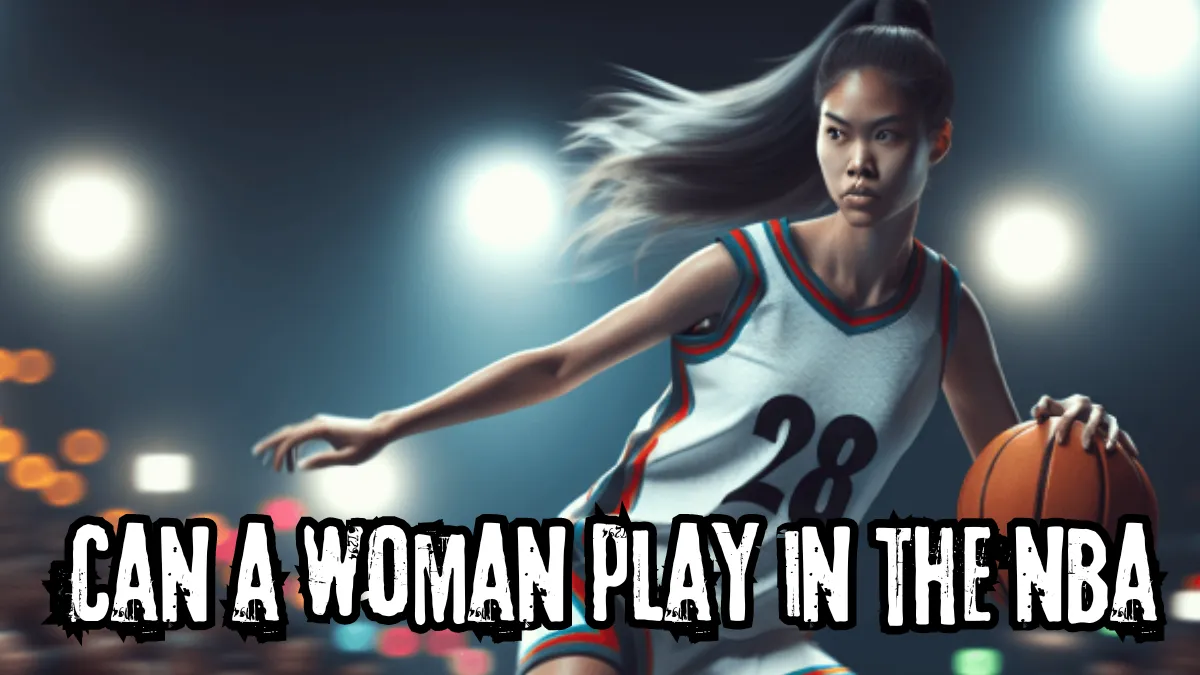Women’s participation in basketball has grown significantly over the years, sparking discussions about their potential inclusion in the NBA. Historically, women have made substantial contributions to the sport, both at collegiate and professional levels. The Women’s National Basketball Association (WNBA) stands as a testament to this progress, offering a premier platform for female athletes.
While women cannot currently play in the NBA, there are ongoing discussions about potential changes to league policies.
The topic of women in basketball is not just about the feasibility of playing in mixed-gender leagues but also about challenging traditional norms and promoting gender equality in sports. The question “can a woman play in the NBA?” remains pivotal as it touches on issues of inclusivity, talent recognition, and societal perceptions of gender roles within professional sports.
A Brief History of Women in the NBA
Lusia Harris: The First Woman Drafted
In 1977, Lusia Harris made history by becoming the first woman to be drafted into the NBA. The New Orleans Jazz selected her in the seventh round, marking a groundbreaking moment for women in professional basketball.
Impact on Women’s Basketball
Lusia Harris’ drafting was a significant milestone that highlighted the potential for women to compete at the highest levels of the sport. Although she never played in an NBA game, her selection was symbolic and paved the way for future conversations about gender inclusion in basketball.
Other Historical Milestones
- Nancy Lieberman: Invited to participate in Indiana Pacers’ 1980 summer training camp.
- Ann Meyers: Signed a contract with the Indiana Pacers in 1979, becoming the first woman to sign with an NBA team.
These milestones are part of a larger narrative, showcasing the contributions of women pioneers in basketball. For more insight into these trailblazers and their impact on women’s basketball, you can explore this detailed account of Women Pioneers in Basketball.
Key Takeaway
Lusia Harris’ drafting was a landmark event that underscored the potential for women’s participation in male-dominated sports. However, this moment did not result in widespread opportunities for women in the NBA, leaving room for ongoing discussions about gender equality in professional basketball. It’s essential to continue believing in women’s potential and advocating for equal opportunities across all levels of sports.
The Current Landscape of Women’s Basketball
The Women’s National Basketball Association (WNBA) is the top professional league for female athletes. Founded in 1996, the WNBA has provided a platform for women to showcase their talents at a professional level. With teams across major cities, the league runs during the summer months and features some of the best female basketball players from around the world.
The growth and popularity of women’s basketball have seen a significant rise. Increased media coverage, such as games aired on ESPN and social media promotion, has brought greater visibility to women’s sports. Fan support has grown, with more spectators attending games and engaging with players online.
Skill development and training programs have been crucial for female players’ success. Initiatives like USA Basketball’s youth development program and specialized training camps help young athletes hone their skills. These programs focus on enhancing techniques, improving physical fitness, and fostering teamwork, ensuring that female players are well-prepared for competitive play at higher levels.
This vibrant landscape demonstrates an evolving appreciation for women’s contributions to basketball while highlighting the ongoing efforts to improve skills and visibility in the sport. However, the question remains whether women’s basketball can sustain its March Madness success, as we continue to witness this growth trajectory.
Barriers to Women’s Participation in the NBA
Current NBA Rules
The eligibility criteria for the NBA do not explicitly bar women from participating. Despite this, several factors implicitly limit female players’ chances of competing at the highest level. The physicality differences between male and female athletes play a significant role. The NBA is renowned for its combination of speed, strength, and athleticism—qualities where men generally have an edge due to physiological differences.
Skill gaps also come into play. While many female players exhibit exceptional skill in their own right, the NBA demands a unique blend of perimeter abilities, size, and power that can be challenging for female athletes to match against their male counterparts.
Gender Inclusion in Professional Sports
Gender inclusion in professional sports remains a contentious issue. Historically, female athletes have faced numerous barriers, from limited access to training resources to societal stereotypes that question their capability to compete alongside men.
Several historical examples illustrate these challenges:
- Lusia Harris’ drafting in 1977: Despite her historic drafting by the New Orleans Jazz, she never played in the league.
- Brittney Griner’s potential draft: Mark Cuban’s interest in drafting her in 2013 brought renewed attention but did not materialize.
These instances highlight ongoing debates about gender inclusion and underscore the need for broader systemic changes to create equal opportunities in professional sports.
Notable Female Players Who Have Paved the Way
Several influential female basketball players have made significant contributions to the sport, serving as role models for aspiring athletes:
- Brittney Griner: Known for her dominant presence in the WNBA and recognized as one of the most talented female players, Griner has consistently pushed the boundaries of women’s basketball. Her consideration by Mark Cuban for an NBA draft spot highlights her exceptional skills.
- Diana Taurasi: Often referred to as one of the greatest female basketball players, Taurasi’s achievements include multiple WNBA championships and Olympic gold medals.
- Sue Bird: With a career spanning over two decades, Bird is celebrated for her leadership on and off the court, contributing to numerous championships and fostering growth in women’s basketball.
These athletes exemplify excellence and determination, inspiring a new generation of female basketball players.
Societal Perceptions and Public Opinion on Women in Sports
Society often views women playing in male-dominated leagues like the NBA through the lens of deep-rooted gender stereotypes. Many still think that women aren’t physically strong or skilled enough to compete at the highest levels of men’s professional sports. This mindset is tied to old-fashioned ideas about what men and women can do in sports.
The way female athletes are portrayed in the media also heavily influences public opinion. Often, coverage focuses more on their femininity or personal lives rather than their athletic accomplishments, which only reinforces existing stereotypes instead of challenging them. However, when female athletes are recognized for their talents and contributions, it can lead to a positive shift in how they’re perceived by the public.
- Gender Stereotypes: Persistent beliefs about physical differences and capabilities.
- Media Portrayal: Focus on personal stories over professional accomplishments.
- Societal Views: Influence of traditional gender roles on perceptions of female athletes.
These factors collectively shape how society views the potential for women to play in the NBA, impacting both public opinion and policy discussions.
Future Prospects: Can We Expect Women to Play in the NBA?
The evolving landscape of professional sports opens up possibilities for women in the NBA. Potential changes to league policies could pave the way for female players at the highest level. Some considerations include:
- Mixed-gender leagues: Integrating male and female players into a single league could create unique opportunities for inclusivity.
- Expanded rosters: Allowing more players per team might facilitate the inclusion of women, providing them with a platform to showcase their skills.
Inclusivity initiatives are crucial in promoting gender equality in athletics. Programs focused on skill development, as well as public campaigns emphasizing the capabilities and achievements of female athletes, can shift perceptions and break down barriers.
The question remains: can a woman play in the NBA? While current challenges exist, fostering an environment where talent is the sole criterion could eventually make this a reality.
FAQs (Frequently Asked Questions)
Can a woman currently play in the NBA?
While women cannot currently play in the NBA, there are ongoing discussions about potential changes to league policies that could allow for female participation in the future.
What was the significance of Lusia Harris being drafted into the NBA?
Lusia Harris was drafted in 1977 as the first woman to be selected in the NBA, marking a significant moment in history for women’s basketball. However, this event did not lead to widespread opportunities for women within the league.
What is the current state of women’s basketball?
The Women’s National Basketball Association (WNBA) is recognized as the premier professional league for women. It has seen growth and increased popularity, driven by enhanced media coverage and fan support, alongside a focus on skill development for female athletes.
What barriers exist for women wanting to participate in the NBA?
Current NBA rules prevent women from competing at the highest level due to factors such as physicality differences and eligibility criteria. Additionally, there are broader discussions about gender inclusion and historical barriers faced by female athletes in professional sports.
Who are some notable female players who have influenced women’s basketball?
Influential players like Brittney Griner have made significant contributions to women’s basketball and serve as role models for aspiring athletes, paving the way for future generations of female players.
How do societal perceptions affect women in sports like basketball?
Societal perceptions regarding women playing in male-dominated leagues like the NBA are often shaped by gender stereotypes and media portrayal. The media plays a crucial role in influencing public opinion about female athletes and their capabilities.

Sam, a dedicated blogger, has immersed himself in the world of content creation for the past five years. His journey reflects a profound passion for storytelling and insightful commentary. Beyond the digital realm, Sam is a devoted NBA enthusiast, seamlessly blending his love for sports with his writing pursuits.

